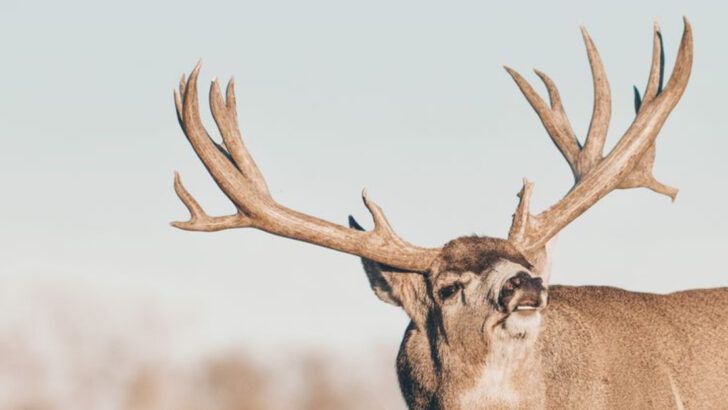Nevada’s landscapes are no place for the faint of heart. With its scorching deserts, jagged mountains, and desolate valleys, this state is home to some of the most resilient and fascinating wildlife on the planet. Here, only the toughest creatures thrive, adapting to one of the harshest environments in America.
From fierce predators to elusive desert dwellers, Nevada’s wild residents have mastered the art of survival. Despite the scorching heat, freezing nights, and rugged terrain, these animals have carved out a life in one of nature’s most challenging playgrounds. Their stories of endurance and adaptability are nothing short of remarkable.
Ready to explore the wild side of Nevada? Join us as we uncover 22 incredible animals that not only survive but flourish in this unforgiving landscape—each one with a unique tale of resilience and survival.
Desert Bighorn Sheep
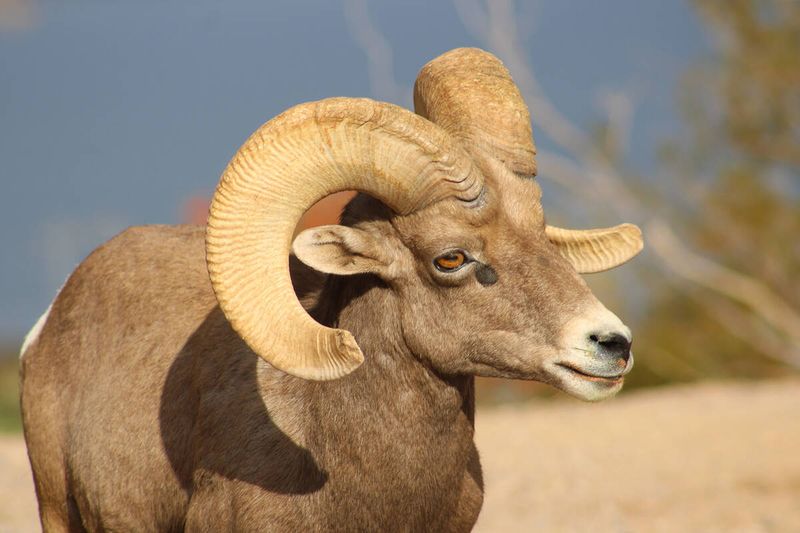
The Desert Bighorn Sheep, Nevada’s state animal, is a symbol of resilience. Known for their impressive horns, these sheep navigate the region’s rocky landscapes with ease.
They can often be seen in the early morning or late afternoon, avoiding the harsh midday sun. Their diet mainly consists of grasses, and they have adapted to survive on minimal water, obtaining moisture from the plants they consume.
These agile climbers are often found in the desert mountains of Nevada, where they can escape predators and find adequate forage. Their social nature and impressive physical adaptations make them fascinating inhabitants of Nevada.
Mountain Lion
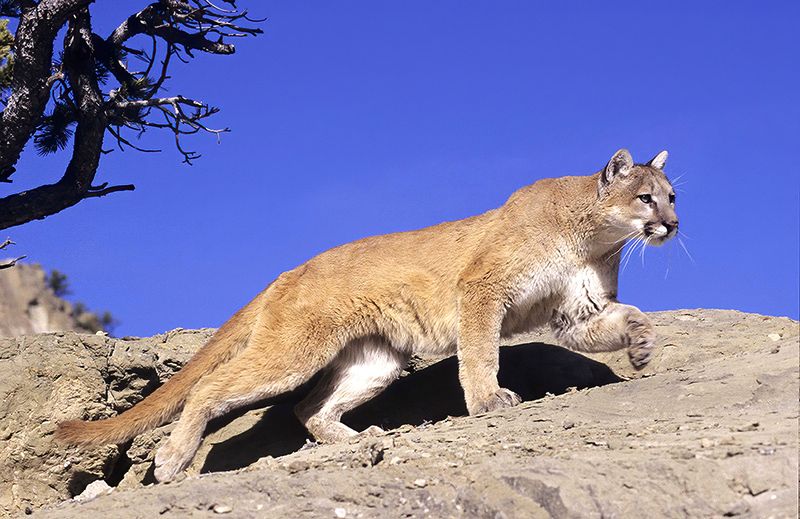
Mountain Lions, also known as cougars, are elusive predators that roam Nevada’s diverse terrains. These solitary animals are known for their strength and stealth, making them formidable hunters.
They primarily feed on deer but will also hunt smaller mammals when necessary. Mountain Lions have a keen sense of sight and smell, which aids them in hunting despite the harsh conditions.
Their ability to adapt to various environments, from the desert floors to the high mountains, showcases their resilience and dominance in the food chain. Observing such a majestic creature is a rare but rewarding experience.
Kit Fox
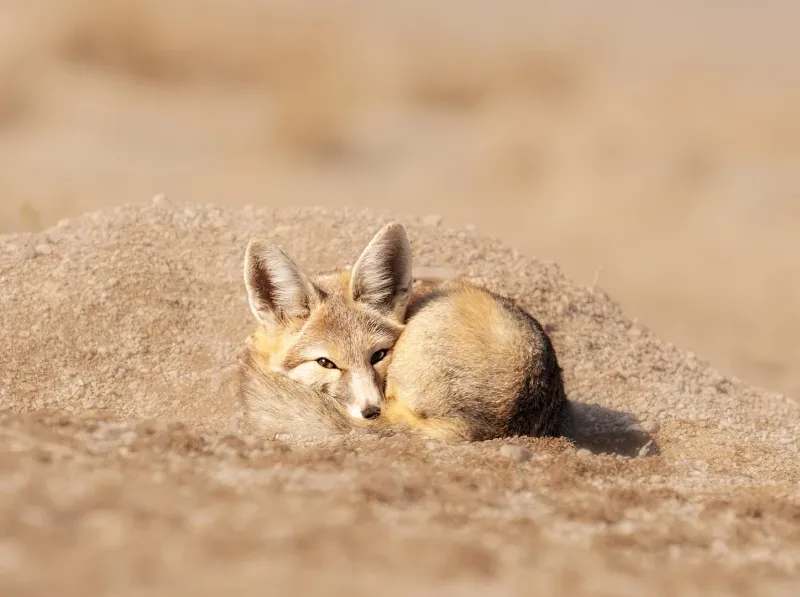
The Kit Fox is the smallest member of the canid family in North America, and it thrives in Nevada’s arid regions. Recognizable by its oversized ears and bushy tail, the Kit Fox is a nocturnal hunter.
These foxes feed primarily on small mammals and insects, using their acute hearing to locate prey. Their large ears also help dissipate heat, an essential adaptation for desert living.
During the day, Kit Foxes retreat to underground burrows to escape the sun’s intensity. Their survival strategies in such a challenging environment highlight their remarkable adaptability and resourcefulness.
Mojave Rattlesnake
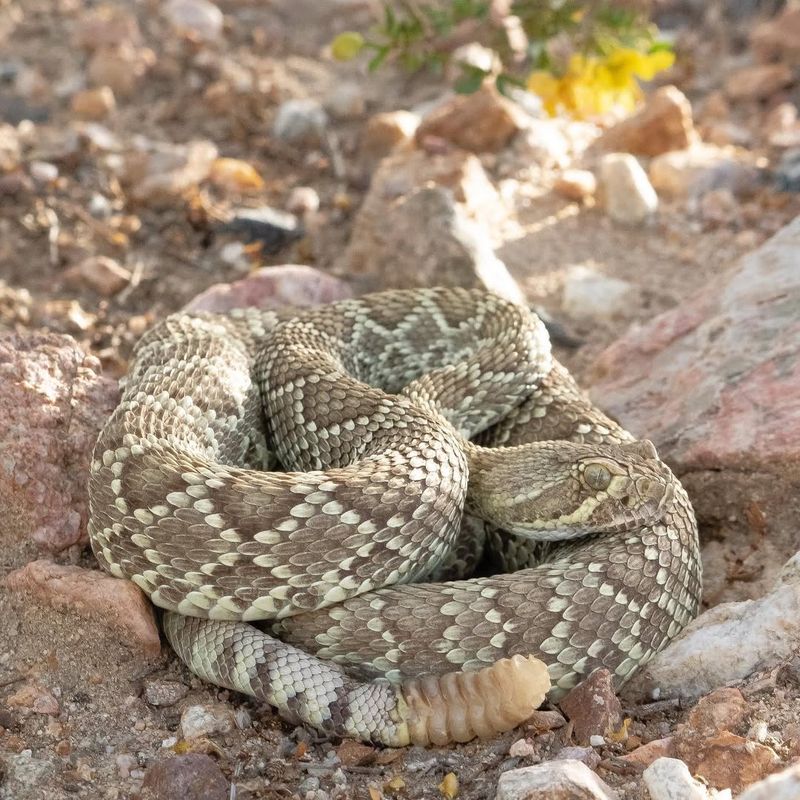
The Mojave Rattlesnake, one of the most venomous snakes in North America, is a master of survival in Nevada’s deserts. Recognizable by its distinctive diamond pattern and virulent bite, this snake demands respect.
Mojave Rattlesnakes are masters of camouflage, blending seamlessly into their sandy surroundings. They are primarily nocturnal, hunting small mammals and birds under the cover of darkness.
Their venom is potent, making them effective predators despite the sparse prey availability. These snakes are crucial to the ecosystem as they help control rodent populations, showcasing the delicate balance of Nevada’s wildlife.
Gila Monster
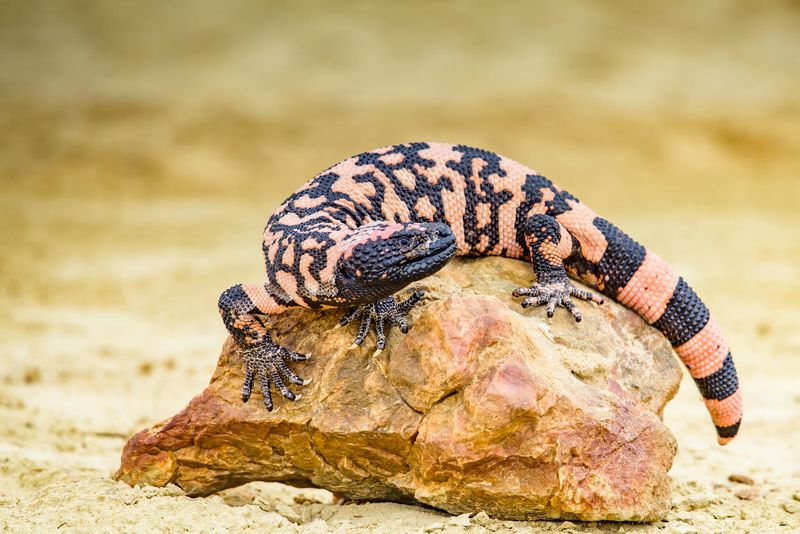
The Gila Monster is a striking reptile known for its bright black and pink scales. As one of the few venomous lizards in the world, it commands attention.
This slow-moving creature spends most of its life in burrows, emerging primarily during the cooler parts of the day. Its diet consists mainly of small mammals, birds, and eggs.
Due to its low metabolism, the Gila Monster can go months between meals. This remarkable adaptation allows it to thrive in Nevada’s arid landscapes, where food sources can be scarce. Observing a Gila Monster is a unique experience for any wildlife enthusiast.
Pronghorn
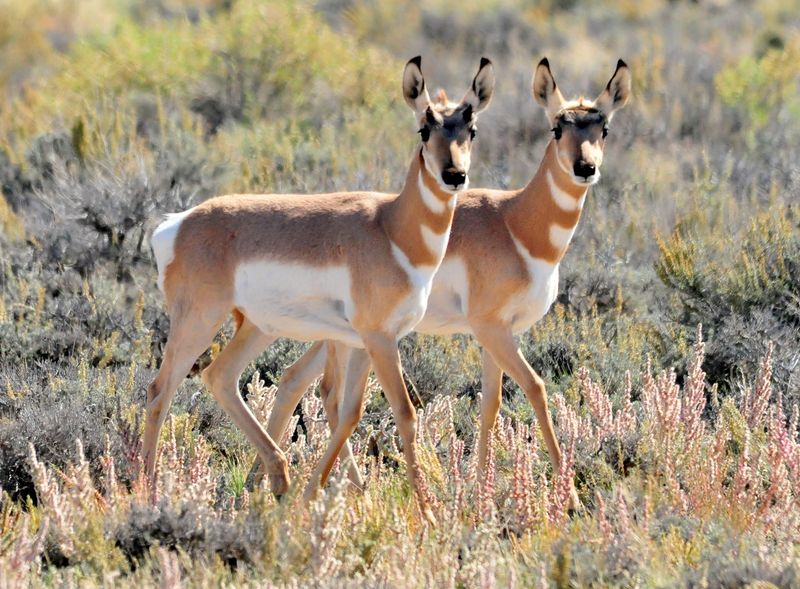
The Pronghorn, often mistaken for an antelope, is one of the fastest land animals in North America, reaching speeds up to 60 mph. Found across Nevada’s open plains, they are built for speed and endurance.
Their large eyes provide excellent vision, crucial for spotting predators from a distance. Pronghorns primarily graze on grasses and shrubs, adapting their diet as the seasons change.
They travel in herds, which offers protection and increases their chances of survival in harsh environments. The Pronghorn’s impressive speed and keen senses make them a spectacular sight on Nevada’s landscapes.
Burrowing Owl
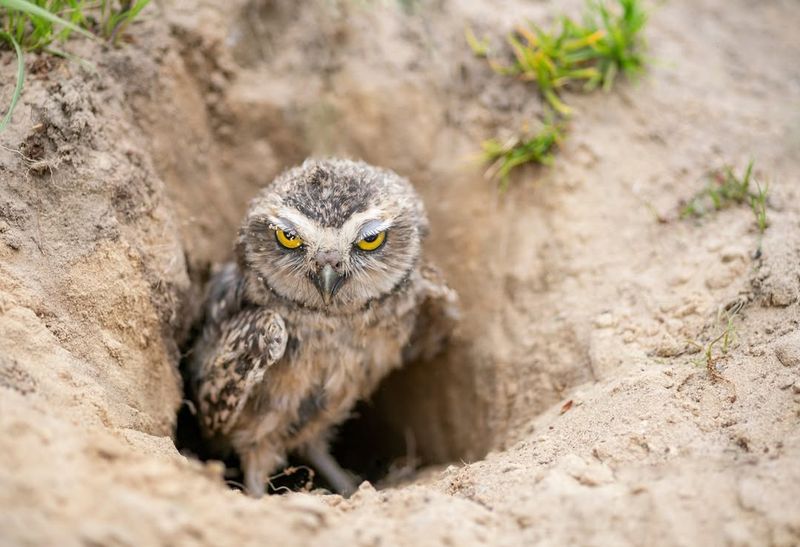
The Burrowing Owl, with its distinctive bright eyes and long legs, is a unique bird that thrives in Nevada’s open landscapes. Unlike most owls, they nest underground, often in abandoned burrows of other animals.
Primarily active during dawn and dusk, these owls prey on insects and small rodents. Their adaptability to living underground offers them protection from predators and the harsh desert climate.
Burrowing Owls display remarkable hunting skills and are known for their quirky behaviors, making them a fascinating subject for bird watchers and nature enthusiasts exploring Nevada’s wildlife.
Black-tailed Jackrabbit
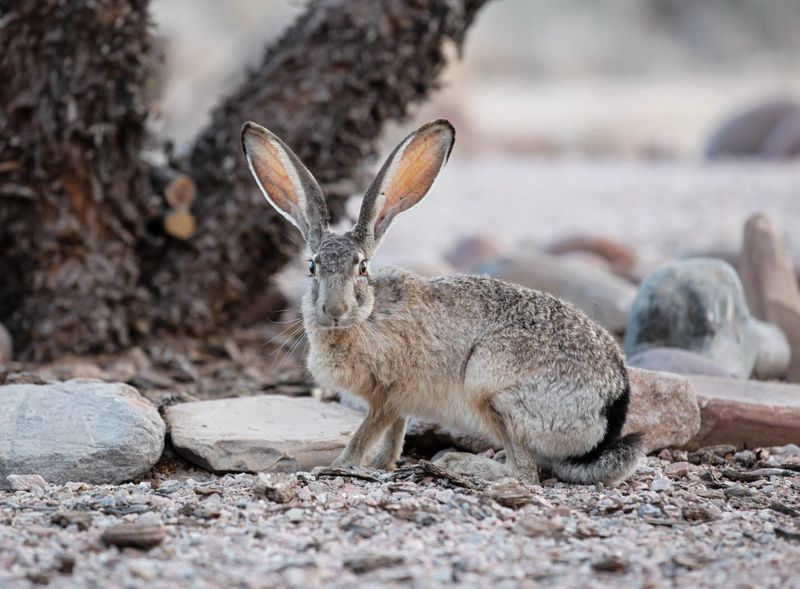
The Black-tailed Jackrabbit is an iconic denizen of Nevada’s desert regions. Known for their long ears and powerful hind legs, these hares are built for survival.
Their ears help regulate body temperature, a vital adaptation for living in extreme heat. Jackrabbits are also incredibly fast, capable of reaching speeds of up to 40 mph, allowing them to evade predators.
Their diet consists mainly of grasses and shrubs, which they forage for during the cooler parts of the day. The Black-tailed Jackrabbit’s speed and adaptability make it a quintessential symbol of desert life in Nevada.
Great Basin Rattlesnake
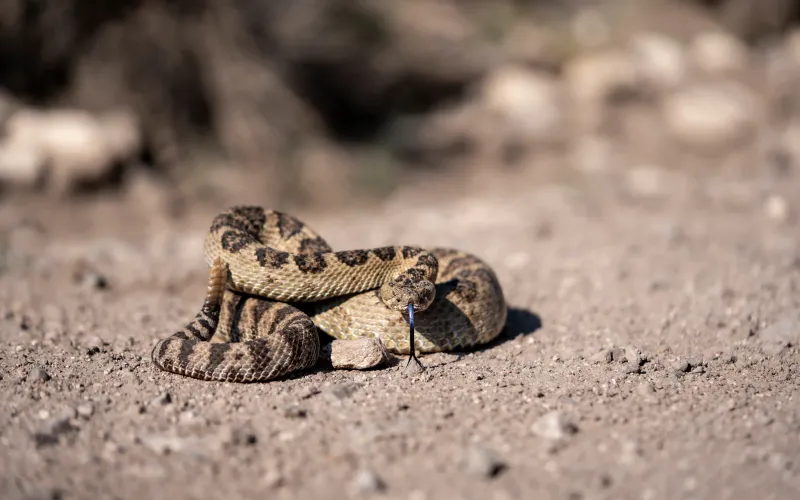
The Great Basin Rattlesnake is a formidable predator in Nevada’s ecosystems. With a distinctive rattle and potent venom, it commands respect from both prey and other predators.
These snakes are expert ambush hunters, lying in wait for unsuspecting rodents and birds. Their camouflage allows them to blend into the desert’s rocky and sandy terrain.
Great Basin Rattlesnakes play a critical role in controlling the rodent population, maintaining ecological balance. Observing their behavior offers insights into the complex web of life that thrives in Nevada’s challenging environments.
American Badger
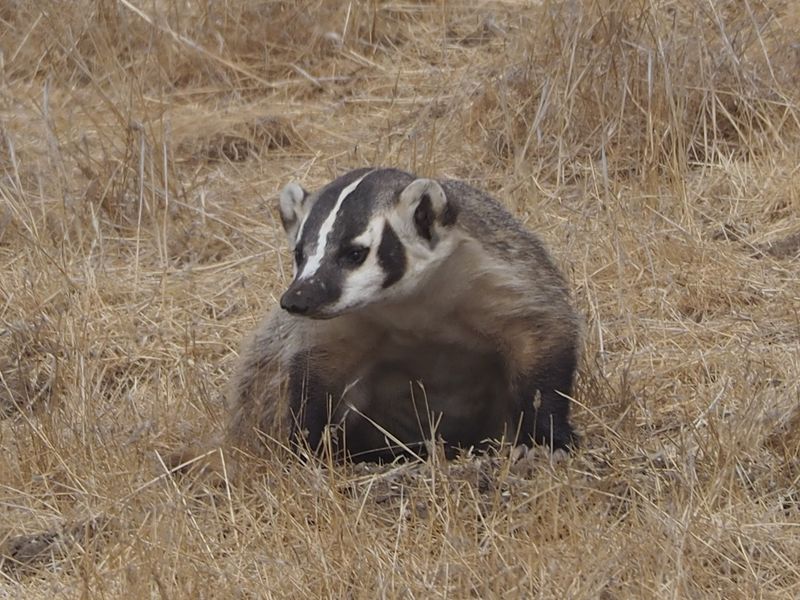
The American Badger is a robust and tenacious mammal that thrives in Nevada’s open grasslands and deserts. Known for their formidable digging abilities, badgers create extensive burrow systems.
These burrows not only serve as shelters but also trap prey, such as rodents, which the badger eagerly hunts. American Badgers have a unique appearance with their stocky bodies and distinctive facial markings.
Their solitary and nocturnal lifestyle makes them elusive, yet they are essential for aerating the soil and controlling pest populations. The American Badger’s role in Nevada’s ecosystem highlights the interconnectivity of all species.
Coyote

Coyotes are one of the most adaptable animals in Nevada, thriving in both rural and urban environments. Known for their intelligence and resourcefulness, they have a varied diet that includes small mammals, fruits, and even insects.
Coyotes are primarily nocturnal, but can be seen during the day, especially in less populated areas. Their distinctive howl is a common sound in the Nevada desert, embodying the wild spirit of the landscape.
These animals often hunt alone or in pairs, but have been known to form packs when hunting larger prey. Their adaptability ensures their survival in Nevada’s diverse habitats.
Western Diamondback Rattlesnake

The Western Diamondback Rattlesnake is an iconic reptile of the Nevada desert. Its distinctive diamond pattern and rattling tail make it recognizable and respected.
These snakes are ambush predators, waiting for small mammals to venture too close. Their venomous bite is an effective tool for subduing prey and deterring threats.
Western Diamondbacks play a crucial role in balancing the ecosystem by controlling rodent populations. Observing these snakes from a safe distance can offer a glimpse into the intricate relationships that define Nevada’s wildlife.
Red-tailed Hawk
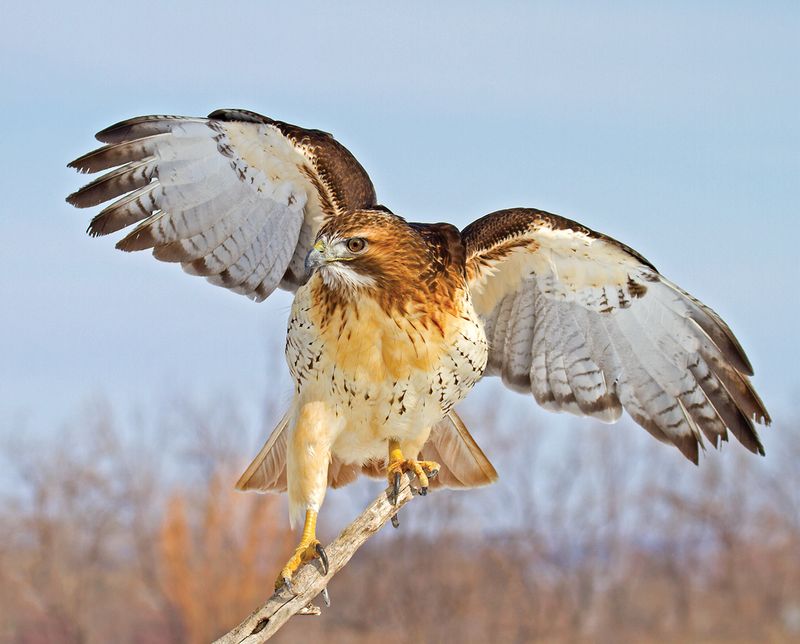
The Red-tailed Hawk is a magnificent bird of prey that dominates the skies over Nevada. Known for their incredible vision and hunting prowess, these hawks are skilled predators.
Their diet consists mainly of small mammals, which they spot from great heights before swooping down to catch. Red-tailed Hawks are often seen perched on high vantage points, surveying the land below.
Their presence is a testament to the rich biodiversity of Nevada’s landscapes. Watching a Red-tailed Hawk in action is a thrilling experience, showcasing the raw power and grace of nature.
Desert Tortoise
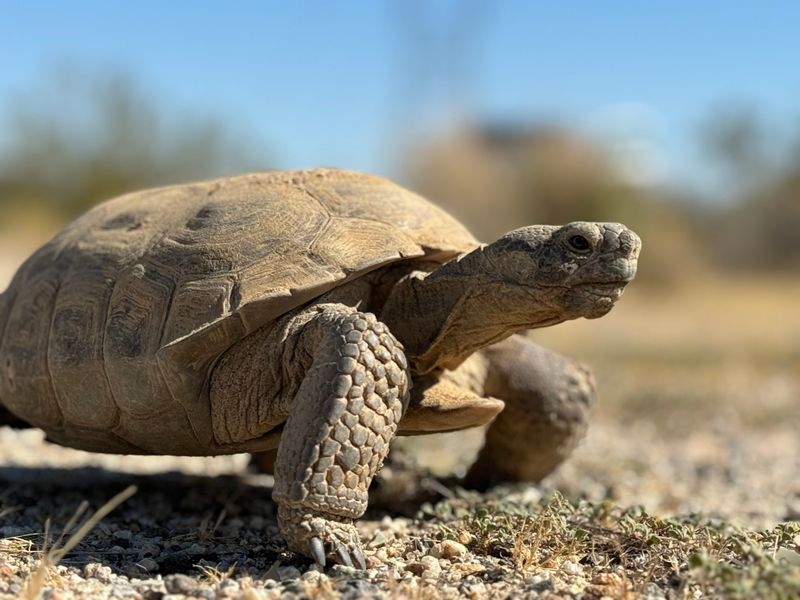
The Desert Tortoise is a remarkable reptile known for its longevity and resilience. These tortoises spend most of their lives in burrows, which protect them from extreme temperatures and predators.
They primarily feed on grasses and wildflowers, which provide both nutrition and hydration. Desert Tortoises can survive for long periods without water, thanks to their slow metabolism and efficient water storage.
Their survival in Nevada’s harsh desert conditions is a testament to their adaptability. Encountering a Desert Tortoise in the wild is a privilege, reminding us of the incredible diversity of life in the desert.
Pallid Bat
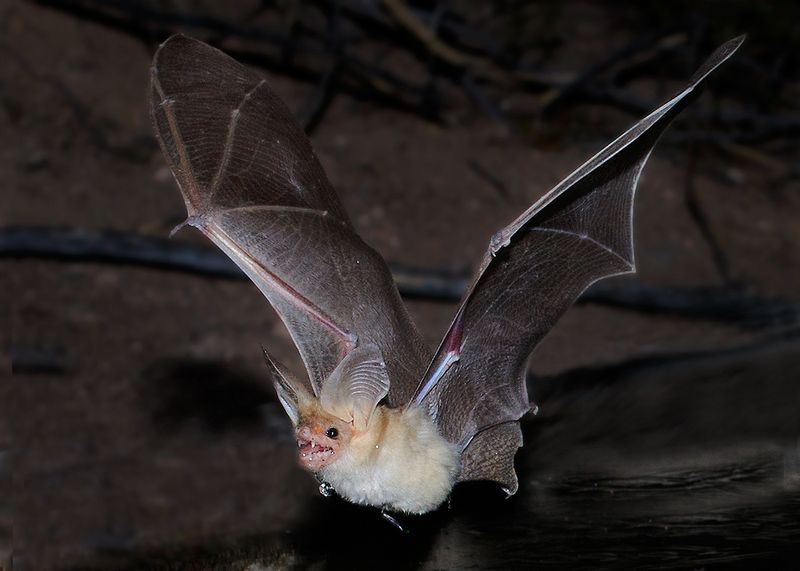
The Pallid Bat is a nocturnal insectivore that thrives in Nevada’s desert landscapes. Known for its large ears and pale coloration, this bat is an expert at hunting insects at night.
Pallid Bats feed on a variety of prey, including beetles and scorpions, using echolocation to navigate and hunt in the dark. Their unique diet helps control the insect population in the desert.
During the day, they roost in caves or rock crevices, emerging at dusk to feed. The Pallid Bat’s nocturnal habits and hunting skills make it an intriguing creature of Nevada’s night skies.
Golden Eagle
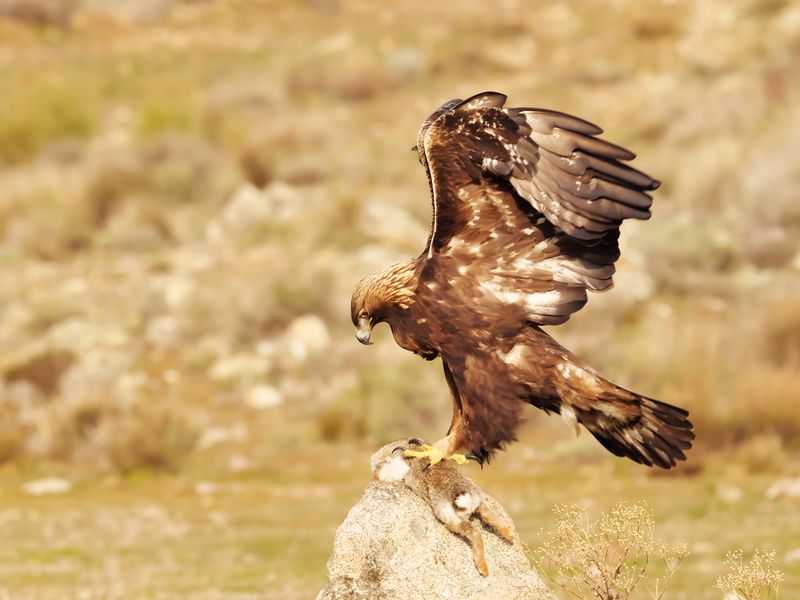
The Golden Eagle is an awe-inspiring predator that reigns over Nevada’s skies. With a wingspan that can exceed seven feet, these birds are powerful hunters.
Golden Eagles feed on a variety of prey, including rabbits and small mammals, relying on their acute vision and speed. They can often be seen soaring high above open areas, riding thermals and surveying for food.
Their impressive hunting skills and majestic presence make them a symbol of wild power and freedom. Observing a Golden Eagle in its natural habitat is a breathtaking experience, offering a glimpse of nature’s grandeur.
Nevada Wild Horse
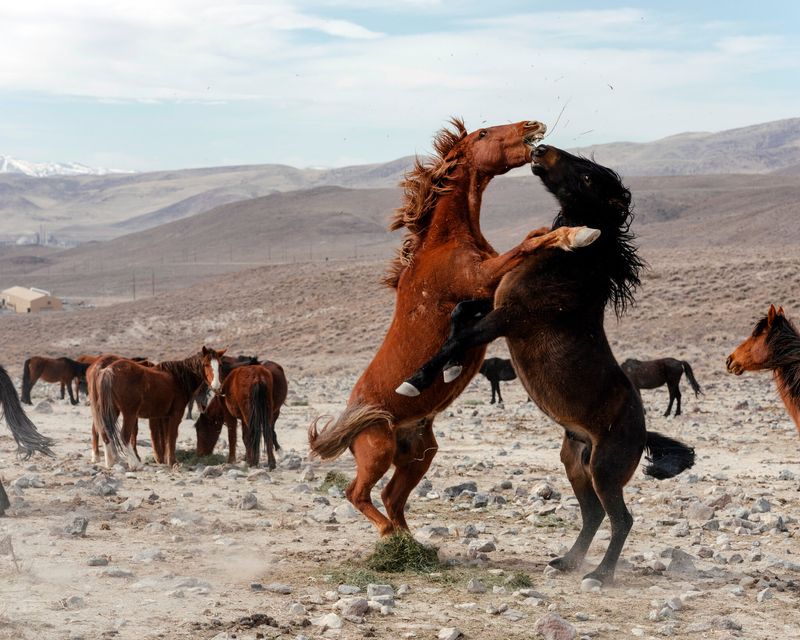
Nevada Wild Horses are a symbol of the untamed spirit of the American West. These horses roam freely across the state’s rugged landscapes, embodying resilience and freedom.
Wild Horses live in bands led by a dominant stallion, with mares and foals forming the core of the group. They graze on grasses and are constantly on the move in search of water and food.
Their presence in Nevada is a reminder of the delicate balance between wildlife and human activity. Watching wild horses gallop across the Nevada desert is a stirring sight, capturing the essence of untamed wilderness.
Chuckwalla
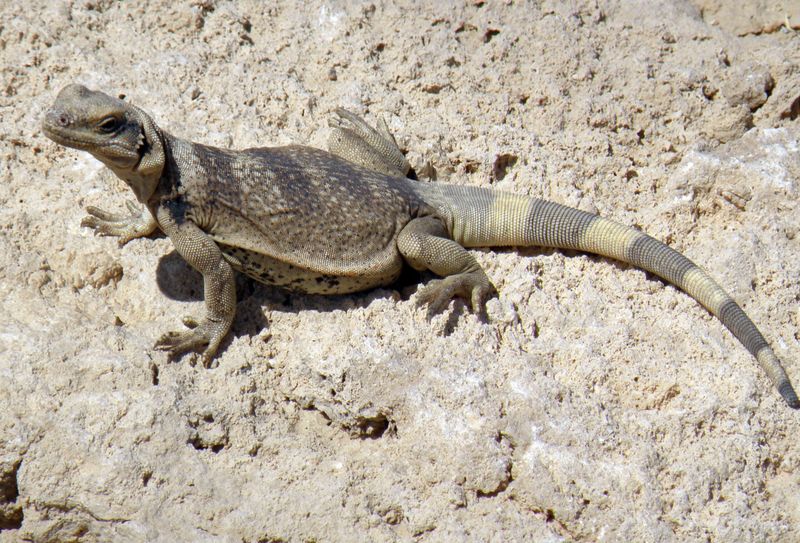
The Chuckwalla, a large lizard, thrives in the rocky outcrops of Nevada’s deserts. With a diet primarily consisting of desert flowers and leaves, it has adapted to conserve water efficiently.
These lizards are known for their unique defense mechanism; they wedge themselves into crevices and inflate their bodies to deter predators. Their skin color can vary, blending seamlessly with the desert landscape.
Active during the day, they are often seen basking in the sun, soaking in the warmth needed for digestion.
Dark Kangaroo Mouse
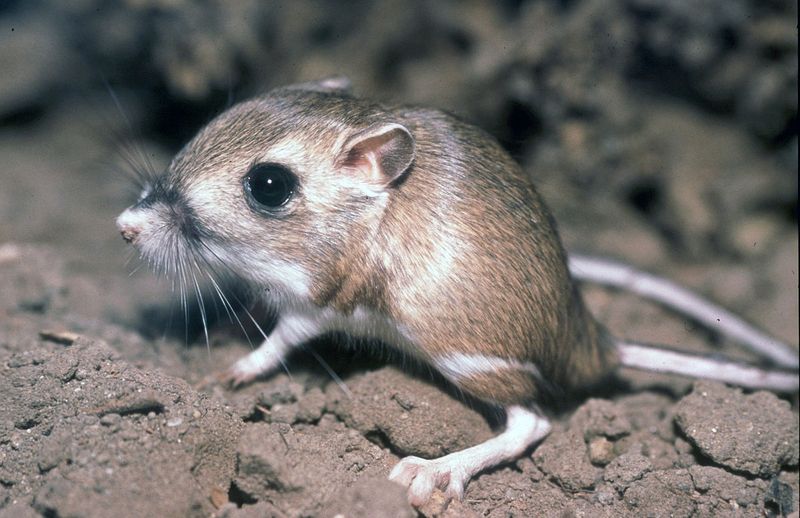
The Dark Kangaroo Mouse is a small, nocturnal rodent found in Nevada’s deserts. Known for its long tail and large eyes, this tiny creature is adapted for life in arid environments.
They are primarily seed-eaters, hoarding food in their burrows to survive the harsh desert conditions. Their ability to live without direct water intake, deriving moisture from their food, is remarkable.
Dark Kangaroo Mice are primarily nocturnal, emerging at night to forage. Their unique adaptations make them an integral part of the desert ecosystem, showcasing the diversity of life thriving in Nevada.
Greater Roadrunner
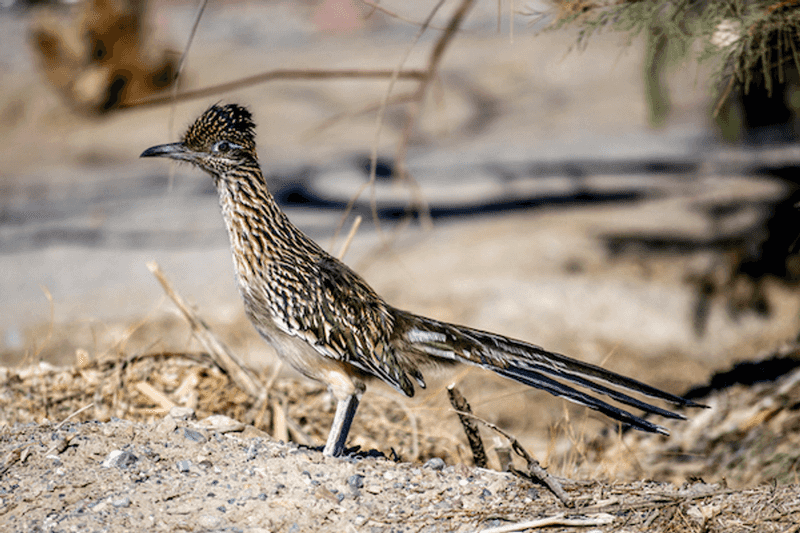
The Greater Roadrunner is an iconic bird of Nevada’s deserts, known for its speed and distinctive appearance. With a long tail and crest, these birds are skilled hunters.
Roadrunners feed on a variety of prey, including insects, reptiles, and small mammals. They are fast runners, capable of reaching speeds up to 20 mph, making them effective predators.
Their adaptability to harsh environments and diverse diet reflects their resilience. Spotting a Greater Roadrunner in its natural habitat offers a glimpse into the vibrant life that thrives in Nevada’s arid landscapes.
Sidewinder Rattlesnake
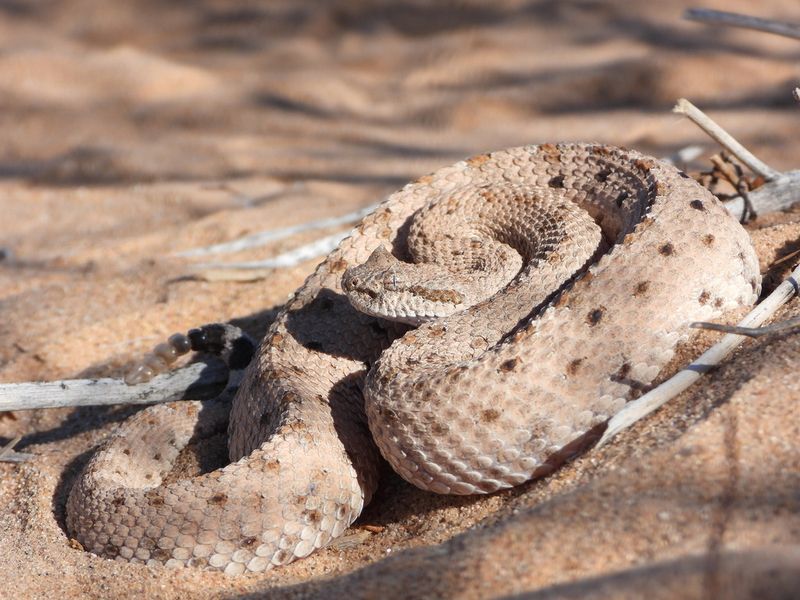
The Sidewinder Rattlesnake is known for its unique method of locomotion, moving sideways across the hot desert sands. This adaptation allows it to travel efficiently while minimizing contact with the ground.
These snakes are ambush predators, using their heat-sensing pits to locate prey such as lizards and small mammals. Their venomous bite is a key tool for subduing prey.
Sidewinders are a fascinating example of evolution, perfectly adapted to their desert environment. Observing their distinctive movement in Nevada’s desert is a testament to the diverse and remarkable wildlife found in the region.
Mule Deer
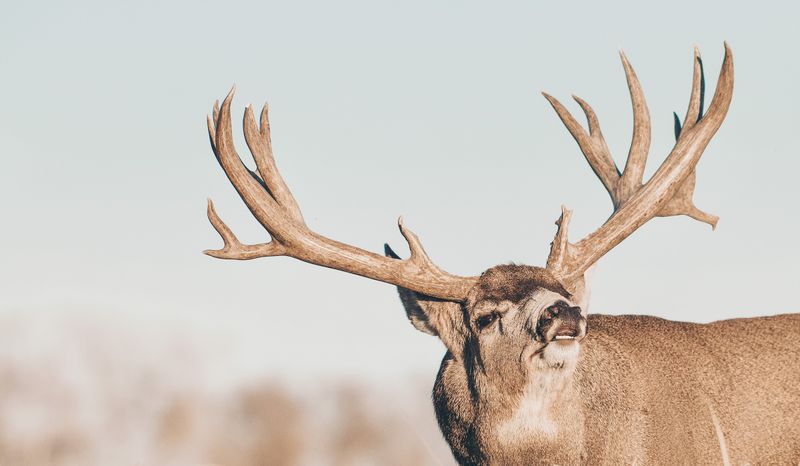
Mule Deer are a common sight in Nevada, known for their large ears and graceful movements. These deer are highly adaptable, thriving in various environments from desert valleys to mountainous regions.
They primarily feed on shrubs and grasses, and their diet changes with the seasons. Mule Deer are social animals, often seen in small groups.
Their presence is vital for the ecosystem, as they serve as prey for larger predators. The Mule Deer’s adaptability and role in the food chain make them an essential part of Nevada’s wildlife, offering a glimpse into the complex interactions within nature.

